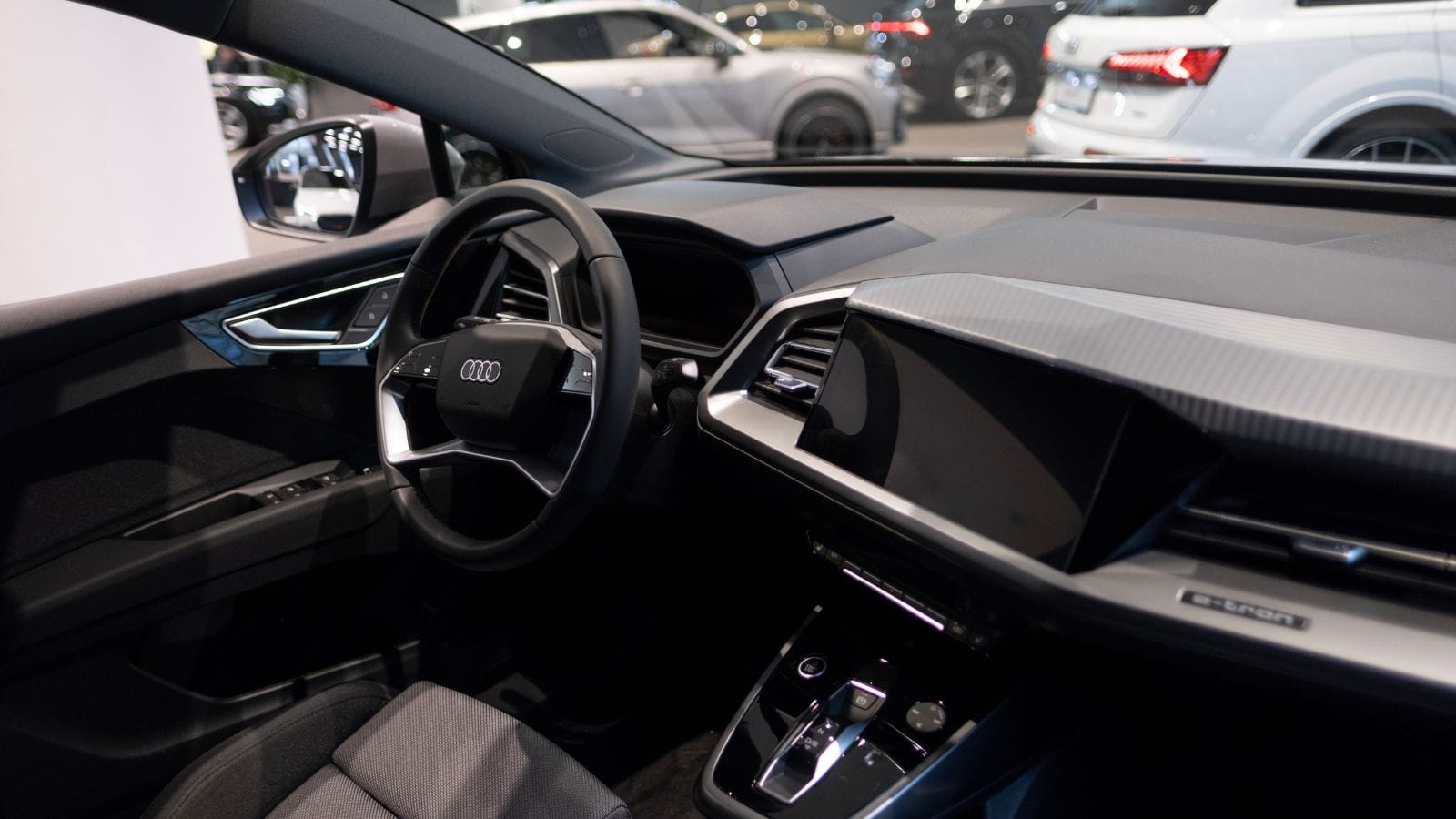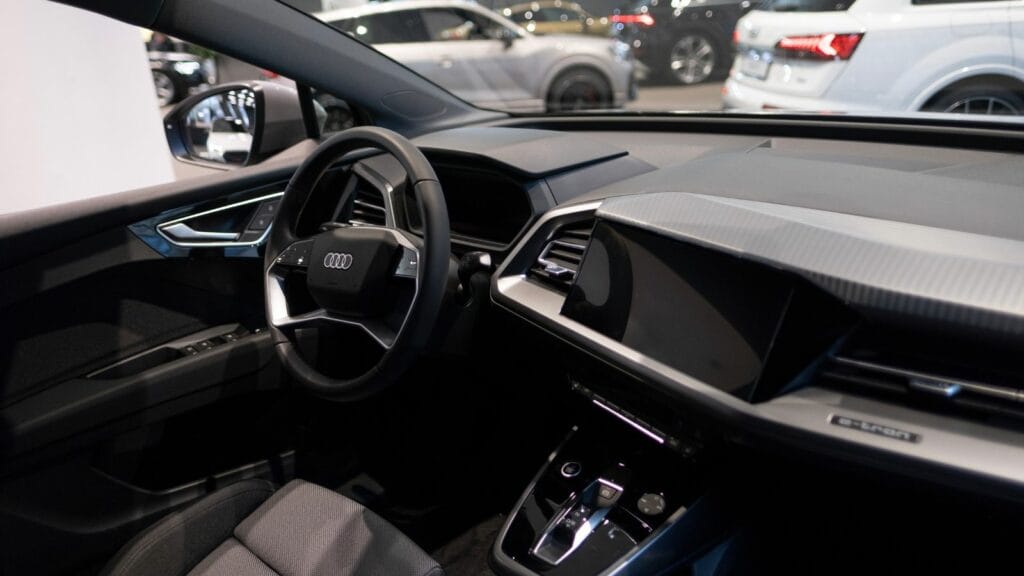With growing U.S. auto tariffs threatening Canada’s automotive economy, provincial governments are deploying creative strategies, from rebates to regulatory shifts, to alleviate consumer and industry strain. Each province’s approach reflects its unique economic mix, automotive landscape, and political stance, while highlighting how Canada is adapting to protect buyers, businesses, and workers from unexpected cost increases. Here are 22 ways Canadian provinces are responding to U.S. tariff pressure:
British Columbia: EV Rebates Increased Locally

In anticipation of rising EV prices, B.C. expanded its CleanBC rebate by $1,000 in early 2025, supplementing the federal iZEV program. The province targeted mid-range and eligible trucks, anticipating U.S. tariff impacts on imports. With charging infrastructure growing and electricity costs stable, B.C. is using incentives plus expanded fast-charging networks to keep EVs affordable, even as tariffs lurk. Officials hope the combined savings and infrastructure support will encourage continued adoption and cushion consumers from sticker shock.
Quebec: Scrap‑and‑Replace Programs

Quebec introduced a scrap-and-replace initiative aimed at drivers of older, high-polluting vehicles who trade in for new or used hybrids and EVs. With anticipated tariff-driven price increases, the province increased the rebate by $500 for vehicles affected by U.S. import duties. This boosts affordability for lower-income families seeking greener options. By coupling environmental goals with tariff relief, Quebec’s program eases both fiscal and ecological burdens, while participants benefit from supports including charging station credits and priority access to provincial incentives.
Ontario: Sales‑Tax Deferral on EVs and Hybrids

Ontario now allows new EV and hybrid buyers to defer provincial sales tax until after tariffs are settled, up to 12 months post-purchase. This delay reduces immediate cost pressure if tariffs are applied mid-year. Applied to models like the RAV4 Hybrid and Tesla Model Y, the measure gives buyers cash flow breathing room while awaiting trade negotiations. Ontario also paired the deferral with expanded charging infrastructure in workplaces, making the incentive more appealing, providing a practical workaround for consumers living in a volatile trade environment and reluctant to face surprise automotive costs.
Alberta: Tariff‑Buffer Fund for Farmers and Fleets

Alberta established a $50 million tariff buffer fund to assist farmers and small fleets facing price hikes on trucks, vans, and heavy equipment. Applications opened in spring to partially offset tariff-induced cost increases on vehicles purchased after July 1, 2025. The funding covers models like the F-150 and Sprinter used for rural operations, and with agriculture and logistics key to the provincial economy, Alberta opted for direct financial relief. The fund is combined with advisory services on tariff-proofing fleet decisions, helping rural businesses budget for rising transport costs.
Manitoba: Green Plate Incentive for Older Vehicles

Manitoba launched its Green Plate incentive program, allowing owners of older, low-emission vehicles to qualify for discounted registration fees in 2025. Designed to ease the transition to newer, tariff-exposed models, the program gives families more time before considering a purchase. By delaying the cost pressure of tariffs, rural and low-income Manitobans can keep reliable older vehicles while markets stabilize. The rebate also includes minor service vouchers, making it easier to keep older cars roadworthy.
Saskatchewan: Interest‑Free Provincial Auto Loans

To buffer tariff spikes, Saskatchewan launched an interest-free auto loan program up to $15,000 for new or used vehicle purchases, specifically targeting models impacted by U.S. import fees. Borrowers must meet income thresholds and undergo financial literacy training before approval. The aim is to reduce the financial burden of sudden price increases while promoting access to modern, reliable wheels. Saskatchewan expects this measure to help rural families, essential workers, and mid-income households remain mobile.
Nova Scotia: Used Car Certification Boost

With new vehicle prices rising, Nova Scotia expanded funding to help used car dealerships certify pre-owned models more affordably. The province now covers up to 75% of inspection and reconditioning costs for models that meet emissions and safety standards. This encourages buyers to opt for local used vehicles rather than costly new imports facing tariffs. Paired with an education campaign about used vehicle reliability, the initiative aims to shift demand without compromising quality.
New Brunswick: Local Assembly Investment Grants

New Brunswick rolled out grants to encourage regional businesses and automotive startups to explore light assembly or retrofitting operations within the province. By nudging companies to convert imported vehicle kits locally, rather than relying entirely on U.S. finished imports, New Brunswick is building resiliency. The grants can also be applied to refurbishing heavy-duty vehicles, farm trucks, or commercial fleets using Canadian components. The province believes local assembly, even at a small scale, can generate jobs while insulating buyers from tariff-related supply disruptions.
Newfoundland and Labrador: Shipping Cost Subsidies

Tariffs often raise sticker prices, as well as freight costs, especially in geographically isolated regions like Newfoundland. In response, the province began subsidizing interprovincial shipping fees for vehicle dealers and logistics companies bringing in non-U.S. autos. The move is meant to diversify supply chains by encouraging imports from Europe and Asia instead of relying on U.S. production. Dealerships receive a per-vehicle subsidy that reduces transport costs by up to 40%, which the province sees as key to avoiding total dependence on U.S. automakers, especially as pricing wars escalate.
Prince Edward Island: Free Transit Expansion

Rather than focus only on vehicle pricing, PEI has doubled down on its public transit network. With tariffs making car ownership less appealing, the province expanded its fare-free transit program to include more rural routes and express lines. By investing in bus frequency and accessibility, PEI hopes to delay or even eliminate car-buying decisions for many residents, especially youth and seniors. The strategy indirectly relieves the pressure caused by rising auto costs and insurance rates, offering a progressive solution with environmental upside and long-term social equity appeal.
Yukon: Remote Vehicle Pool Sharing Credits

In Yukon, where new vehicles are hard to come by even without tariffs, the territorial government launched a pilot program for remote community vehicle-sharing. Local governments or nonprofits can now apply for grants to buy shared-use trucks or SUVs, with maintenance partially covered for the first two years. The program helps communities avoid individual purchases at inflated post-tariff prices, offering a sustainability-minded solution in places where owning a vehicle may not make sense for every household.
Northwest Territories: Support for Parts Importers

With parts often coming from U.S. warehouses, NWT established a subsidy for mechanics and garages importing components for vehicle repair. The territory now refunds up to 25% of tariff-related markup on eligible parts, from spark plugs to entire engines. This allows more residents to keep older vehicles on the road safely while avoiding the need for expensive new purchases. For isolated northern drivers, it’s a lifeline program, bridging the gap between affordability and roadworthiness while tariffs play out on the national stage.
Nunavut: Fuel Efficiency Rebates

Nunavut has responded to potential price spikes by incentivizing ownership of the most fuel-efficient models available in its fleet. In a territory where every liter of fuel must be flown or shipped in, any move toward efficiency is vital. The new rebate program gives up to $2,000 for cars rated above 40 mpg, or 5.9 L/100km, whether new or gently used. Officials hope this nudges residents toward smarter purchases, even if tariffs inflate vehicle prices, providing a measured step toward affordability in a region with extraordinary logistical hurdles.
Ontario: Auto Industry Bridge Loans

Beyond consumer support, Ontario launched a $500 million bridge financing fund for small- and medium-sized auto parts manufacturers facing sudden supply chain or pricing challenges. Loans are interest-free for 18 months and can be used for warehousing, retooling, or diversifying imports. The goal is to preserve jobs while keeping local production viable under shifting tariff structures. By supporting suppliers directly, the province seeks to prevent price markups from cascading down to consumers.
Quebec: Low-Income Lease Assistance

Quebec now offers direct monthly support for low-income families leasing tariff-exposed models such as compact hybrids or base-trim crossovers. The program provides $150-$200 monthly for up to two years, helping consumers weather elevated lease payments. The eligibility is tied to income and household size, and only applies to vehicles below a certain MSRP threshold. Combined with Quebec’s existing EV and green-vehicle rebates, it is one of Canada’s most aggressive anti-tariff consumer programs that also lowers financial barriers and ensures that cleaner and more efficient vehicles remain within reach.
Alberta: Tariff-Ready Fleet Planning Toolkit

Alberta launched a free digital toolkit for businesses and municipal governments to analyze how tariffs could affect future fleet purchases. The platform models price projections, tariff exposure levels, and cross-border supply chain risks for trucks, vans, and industrial vehicles. While not a direct subsidy, it helps organizations plan smarter purchases and avoid vulnerable SKUs. With oil and agriculture heavily dependent on vehicles, Alberta sees data transparency as a frontline defense.
Manitoba: Dealer Tariff Transparency Mandate

Manitoba introduced a mandate requiring dealerships to disclose any tariff-related markup as a separate line item on the bill of sale. The transparency aims to prevent hidden inflation and gives consumers leverage when comparing across regions or periods. By making tariffs visible at the dealership level, the province hopes to increase awareness and protect buyers from opportunistic pricing. It’s a consumer rights win that other provinces are watching closely, and one that could push automakers to justify price hikes more rigorously.
Nova Scotia: Coastal Port Diversification Fund

Nova Scotia has offered grants to improve port infrastructure that could receive Asian or European vehicles, reducing reliance on U.S. overland shipping. This proactive move could make Halifax a key gateway for tariff-avoiding imports. Dealers who commit to rerouting supply chains through the port receive shipping subsidies and priority logistics support, providing an infrastructure-heavy response with long-term potential to reshape Canadian auto imports and reduce consumer price pressure, especially in Atlantic Canada.
Saskatchewan: Rural Ride Access Pilot

Saskatchewan launched a rural ride-hailing subsidy aimed at low-density areas affected by rising car costs. By partnering with private operators and co-op networks, the province offers $5–$10 ride credits per trip for rural residents without access to affordable vehicles. This is meant to give flexibility while reducing the urgency to purchase a new car in the face of high tariffs. The pilot is showing early success among seniors, students, and seasonal workers.
New Brunswick: Dealer Rebate Match Program

To combat slowing sales, New Brunswick will now match dealer rebates on qualifying models up to $1,000 per vehicle, particularly those likely to be impacted by U.S. tariffs. This boosts buyer confidence and encourages dealers to offer aggressive discounts even amid uncertainty. It’s a short-term patch, but one designed to stimulate local inventory turnover and avoid a sales freeze as prices tick upward.
British Columbia: EV Leasing Bonus

British Columbia added a $1,500 bonus for qualifying EV leases in 2025 to prevent a drop-off in electric vehicle adoption caused by U.S. supply constraints. The bonus is stackable with federal and provincial EV rebates, making leasing far more attractive than buying for many. As EV prices trend upward due to tariffs and tighter inventory, B.C. sees leasing as a tariff-resistant workaround for keeping climate goals on track.
All Provinces: Premiers’ Automotive Resilience Summit

In a rare act of interprovincial collaboration, all 10 provinces and 3 territories participated in a 2025 summit to coordinate auto tariff responses. The result was a framework for joint procurement, standardized subsidies, and pooled shipping strategies, especially for emergency fleets, school buses, and municipal transport. Though still in early stages, the move signals a nationwide readiness to collaborate if U.S. tariffs worsen. It also sends a strong message to Ottawa that provinces will not wait for federal fixes to protect their drivers and economies.
21 Products Canadians Should Stockpile Before Tariffs Hit

If trade tensions escalate between Canada and the U.S., everyday essentials can suddenly disappear or skyrocket in price. Products like pantry basics and tech must-haves that depend on are deeply tied to cross-border supply chains and are likely to face various kinds of disruptions
21 Products Canadians Should Stockpile Before Tariffs Hit
